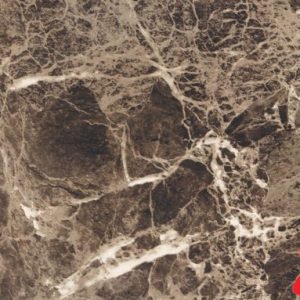- Sort by: Default Sorting
- Show: 100 items/page
Wooden Flooring for Home has become a popular choice for homeowners looking to add elegance, warmth, and durability to their living spaces. With its timeless appeal and versatility, wooden flooring offers numerous benefits that make it an excellent option for any home. In this article, we will explore the advantages of wooden flooring, discuss the different types available, provide installation tips, and offer guidance on maintenance. Whether you are renovating or building a new home, Wooden Flooring for Home can be a fantastic addition to enhance the overall aesthetics and comfort of your living space.
Introduction
Wooden flooring has a timeless appeal that can transform the look and feel of any home. It brings warmth, beauty, and a touch of nature indoors, creating a welcoming and cozy atmosphere. Moreover, wooden floors are known for their durability, making them a long-term investment that adds value to your property.
Advantages of Wooden Flooring
Wooden Flooring for Home offers several advantages over other types of flooring materials:
- Elegant Aesthetics: Wooden floors provide a classic and sophisticated look that complements various interior design styles, from traditional to modern.
- Durability: High-quality wooden floors can withstand heavy foot traffic and last for generations with proper care.
- Versatility: Wooden flooring comes in various types, colors, and finishes, allowing you to choose the perfect style to match your home decor and personal preferences.
- Improved Indoor Air Quality: Unlike carpets, wooden floors do not trap allergens, dust, or pet dander, making them an excellent choice for individuals with allergies or respiratory sensitivities.
- Easy Maintenance: Wooden floors are relatively easy to clean and maintain, requiring regular sweeping or vacuuming and occasional mopping.
Types of Wooden Flooring
When it comes to wooden flooring for office there are three primary types to consider:
1. Solid Hardwood Flooring
Solid hardwood flooring is made from a single piece of solid wood. It offers unmatched beauty and durability, with the ability to be sanded and refinished multiple times. Solid hardwood floors are suitable for above-grade installations and can be nailed or glued to the subfloor.
2. Engineered Wood Flooring
Engineered wood flooring consists of multiple layers of wood veneers stacked together. It provides better stability than solid hardwood, making it suitable for below-grade installations and areas with fluctuating humidity levels. Engineered wood flooring can be installed as a floating floor or glued down.
3. Laminate Wood Flooring
Laminate wooden flooring for office is a cost-effective alternative to solid hardwood and engineered wood. It features a high-resolution photograph of wood grain laminated onto fiberboard. While not real wood, laminate flooring offers durability, easy installation, and a wide range of designs to choose from.
Choosing the right wooden flooring wholesaler
When selecting wooden flooring wholesaler for your home, consider the following factors:
Traffic and Lifestyle: Assess the amount of foot traffic and the presence of pets or children in your home. This will help determine the durability and scratch resistance required for your flooring.
- Climate and Environment: Consider the humidity and temperature fluctuations in your area. Different types of wooden flooring have varying resistance to moisture, making it important to choose one that suits your local climate.
- Aesthetic Preferences: Take into account the overall style and color scheme of your home. Whether you prefer a rustic, contemporary, or traditional look, there is a wooden flooring option to match your design vision.
Installation Process
Proper installation is crucial for the longevity and performance of your wooden flooring. Here are the key steps involved:
– Subfloor Preparation
Ensure that the subfloor is clean, level, and dry before installation. Remove any existing flooring materials and address any moisture issues.
– Acclimation of Wood
Allow the wooden flooring to acclimate to the room’s temperature and humidity for a minimum of 72 hours before installation. This helps prevent issues such as warping or buckling after installation.
– Installation Techniques
The installation method will depend on the type of wooden panel supplier chosen. Solid hardwood and engineered wood floors can be either nailed, glued, or floated, while laminate flooring is typically installed as a floating floor.
– Finishing Touches
Complete the installation by adding baseboards or molding to conceal the expansion gaps. Sanding, staining, and applying a protective finish can also be done at this stage to enhance the appearance and durability of the floor.
Maintenance and Care
To ensure the longevity and beauty of your wooden panel supplier, follow these maintenance tips:
1. Regular Cleaning
Sweep or vacuum your wooden floors regularly to remove dust, dirt, and debris. Use a damp mop or microfiber cloth for occasional mopping, avoiding excessive moisture.
2. Preventive Measures
Place doormats at entry points to minimize the amount of dirt and grit brought onto the wooden panel supplier for floors. Felt pads or furniture glides can be used under furniture legs to prevent scratches.
3. Refinishing and Restoration
Over time, wooden floors may develop scratches, dents, or wear. Professional refinishing and restoration services can bring back their original beauty, extending their lifespan.
Conclusion
Wooden flooring offers a combination of elegance, durability, and easy maintenance that makes it an excellent choice for homeowners. With its timeless appeal and versatility, wooden flooring can enhance the beauty and comfort of any home. By considering the different types available, ensuring proper installation, and following a regular maintenance routine, you can enjoy the benefits of wooden flooring for years to come.
Frequently Asked Questions (FAQs)
Q1: Is wooden flooring suitable for all areas of the house?
Yes, wooden flooring can be installed in various areas of the house, including living rooms, bedrooms, dining rooms, and even kitchens. However, it is not recommended for areas with high moisture, such as bathrooms.
Q2: How long does wooden flooring last?
With proper care and maintenance, wooden flooring can last for several decades. Solid hardwood floors, in particular, can be sanded and refinished multiple times, significantly extending their lifespan.
Q3: Can I install wooden flooring myself, or should I hire a professional?
While it is possible to install wooden flooring yourself, hiring a professional installer is recommended, especially if you lack experience. Professional installers have the necessary expertise and tools to ensure a flawless installation.
Q4: How often should I refinish my wooden floors?
The frequency of refinishing depends on several factors, such as the type of wooden flooring, the amount of foot traffic, and the level of wear and tear. On average, solid hardwood floors may need refinishing every 8-12 years.
Q5: Can I change the color of my wooden flooring?
Yes, it is possible to change the color of your wooden flooring through staining. However, it is recommended to consult with a professional to ensure proper techniques and achieve the desired results.



